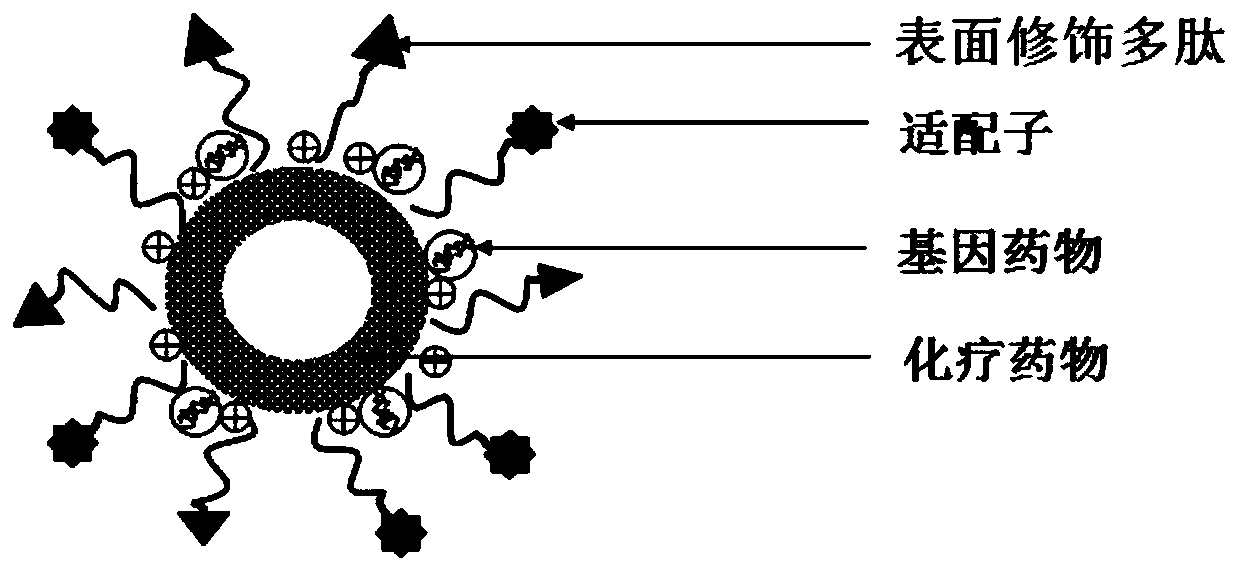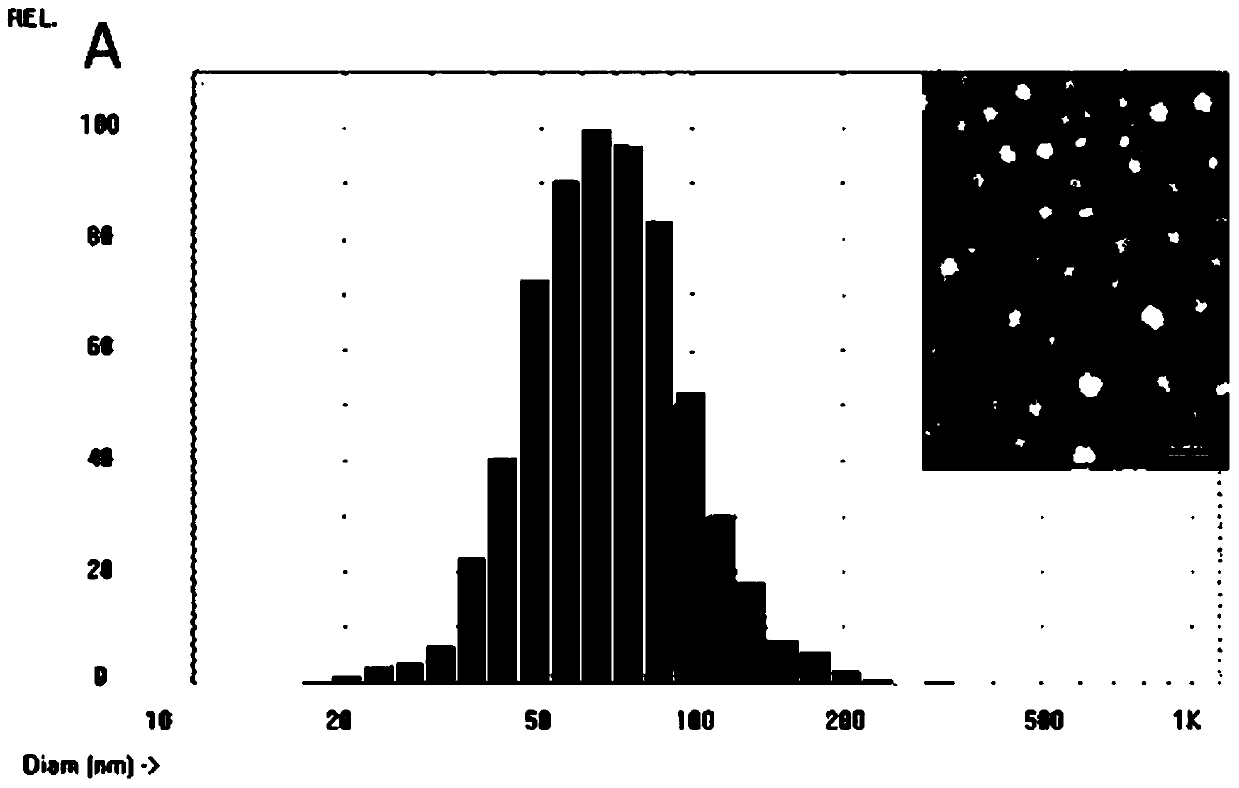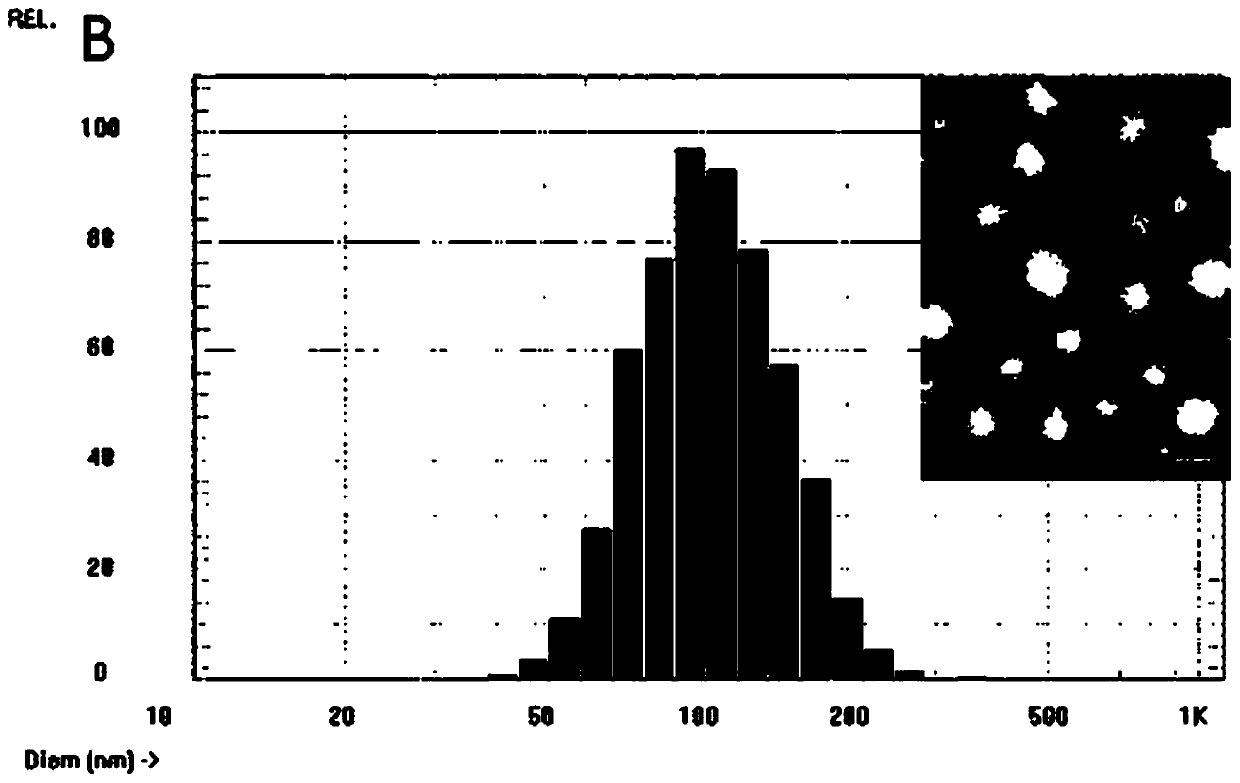Nanometer drug delivery system targeted for brain tumors and tumor stem cells thereof and preparation and application of nanometer drug delivery system
A tumor stem cell and nano-drug technology, applied in the field of nano-drug delivery carrier, can solve the problems of lack of specificity of signaling pathway, difficulty in targeted delivery, stem cell killing, etc., and achieve improved therapeutic effect, easy operation and good biocompatibility. Effect
- Summary
- Abstract
- Description
- Claims
- Application Information
AI Technical Summary
Problems solved by technology
Method used
Image
Examples
Embodiment 1
[0048] A method for preparing a nano-drug delivery vehicle targeting brain tumors and tumor stem cells, the steps are as follows:
[0049] (1): Synthesis of phospholipids carrying targeting molecules: the surface modified polypeptide (SEQ ID NO. 1) and aptamer (SEQ ID NO. 2) are connected to the COOH group of COOH-PEG2000-DSPE with EDC and NHS as linkers Above, the molar ratio is COOH-PEG2000-DSPE:EDC:NHS (N-hydroxysuccinimide)=0.03:1.25:2.1, mmol / mmol, incubate at room temperature and stir slowly for 8h. The sum of the molar amount of surface-modified polypeptide and aptamer is equal to the molar amount of COOH-PEG2000-DSPE.
[0050] (2): The targeted phospholipid prepared in step (1), DC-chol, and DOPE are dissolved in chloroform at a molar ratio of 1:2:0.03, and the dry film is formed by rotary evaporation at 40°C for 2 hours. Hydrate in HEPES (10mM, pH 7.4) buffer for 30min to make the final phospholipid concentration 20mg / mL. Sonicate the probe for 10min with ultrasonic probe...
Embodiment 2
[0056] (1): Synthesis of phospholipids carrying targeting molecules: the surface modified polypeptide (SEQ ID NO. 1) and aptamer (SEQ ID NO. 2) are thiolated and then linked to phosphatidylethanolamine-polyethylene glycol 2000-Malay On imide (MAL-PEG2000-DSPE), the target molecule is dissolved in 0.15mol / L borate+0.1mmol / L EDTA buffer (pH8.5), then 2-IT is added, and the reaction is incubated at room temperature for 60min. The solution was concentrated by ultrafiltration, the buffer was replaced with 0.1 mol / L PBS (pH 8.0), detected by Ellman reagent, and the feed ratio was 1:40 (mol / mol).
[0057] (2): Dissolve the targeted phospholipid prepared in step (1) with DC-chol, DOPE and other phospholipid components in chloroform at a molar ratio of 1:2:0.03, and vacuum rotary evaporate at 40°C for 2 hours. The dry film formed is in HEPES (10mM, pH 7.4) hydration in buffer for 30min to make the final phospholipid concentration 20mg / mL, ultrasonic probe ultrasonic for 10min, and then pa...
Embodiment 3
[0063] Characterize the particle size and apparent morphology of the targeted nanocarrier system.
[0064] (1) Use dynamic light scattering instrument (Zetasizer, Nano-ZS, Malvern, UK) to measure particle size distribution and surface potential. At the same time, the change of particle size of the prepared sample before and after adding 10% BSA was detected.
[0065] (2) Take an appropriate amount of the sample, drop it on a copper mesh covered with carbon film, negatively stain with 2.0% phosphotungstic acid, dry at room temperature for 0.5 h, and observe the external morphology of the liposome under a transmission electron microscope.
[0066] The experimental results are as Figure 2A~2D Shown. by Figure 2A~2D It can be seen that by combining DLS and TEM, it can be seen that the particle size of the system is uniformly dispersed. With the increase of the amount of plasmid, the particle size of the system increases and the ZETA potential decreases, but the particle size in 10 m...
PUM
 Login to View More
Login to View More Abstract
Description
Claims
Application Information
 Login to View More
Login to View More - R&D
- Intellectual Property
- Life Sciences
- Materials
- Tech Scout
- Unparalleled Data Quality
- Higher Quality Content
- 60% Fewer Hallucinations
Browse by: Latest US Patents, China's latest patents, Technical Efficacy Thesaurus, Application Domain, Technology Topic, Popular Technical Reports.
© 2025 PatSnap. All rights reserved.Legal|Privacy policy|Modern Slavery Act Transparency Statement|Sitemap|About US| Contact US: help@patsnap.com



